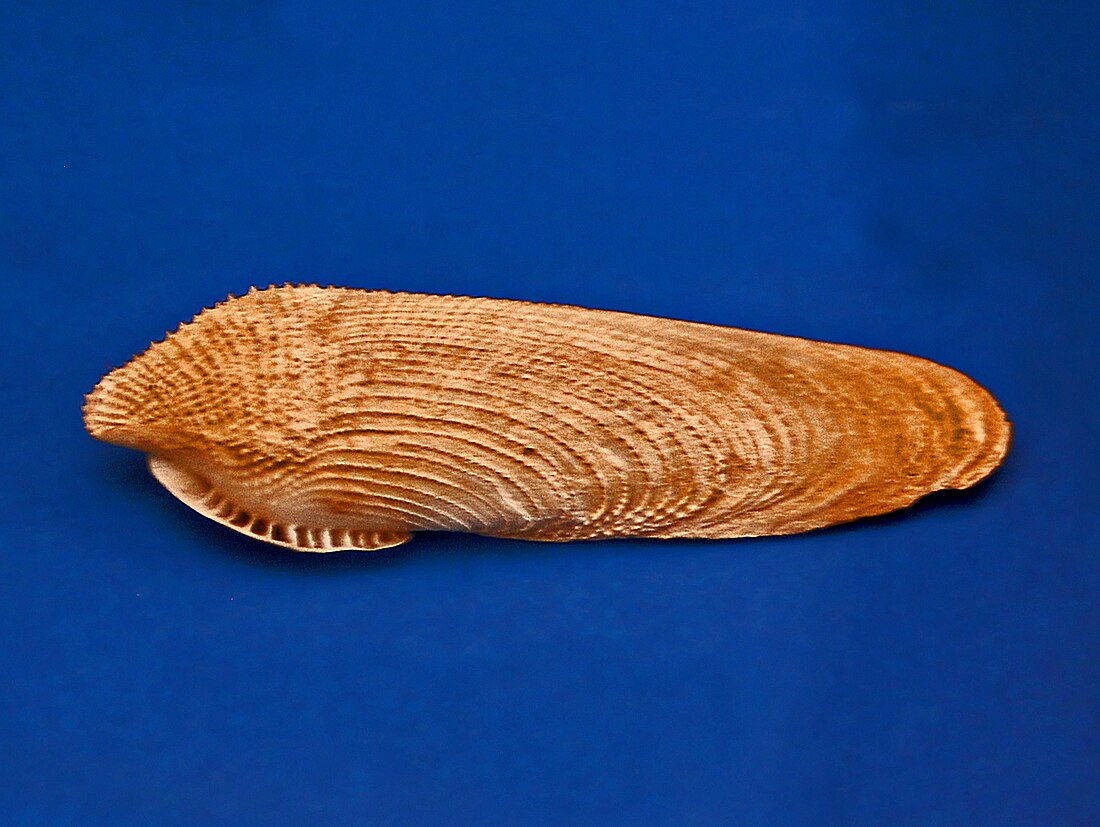Top Qs
Timeline
Chat
Perspective
Pholas dactylus
Species of bivalve mollusc From Wikipedia, the free encyclopedia
Remove ads
Pholas dactylus, or common piddock, is a bioluminescent clam-like species of marine mollusc in the family Pholadidae.
The piddock bores into the substrate for shelter, and lives in a tubular burrow formed by grinding the material away with hard parts of the shell by rotating on the longitudinal axis. It has been known to bore into the hard metamorphic rock gneiss, though it more often lives in softer rock. It is a filter feeder, using its siphons to reach the water outside the burrow. It was once a highly esteemed food in Europe.[2][1]

It is sensitive to light, retracting into its shell when exposed to it.[3]
Remove ads
Distribution
The coasts of the North Atlantic and the Mediterranean Sea.
Ancient history
Pliny spoke of luminescence in the mouths of people who ate Pholas, the rock-boring shell-fish, and of such importance is this phenomenon that it is even said to have gained the first king of Scotland his throne.[4] Hippolytus of Rome tells us that it was a common pagan trick to use the luminescent property of this clam to create the illusion of burning, "And they accomplish the burning of a house, by daubing it over with the juice of a certain fish called dactylus."[5] In Bernard Cornwall’s ‘Excalibur’ Merlin daubs a girl in the juices from ‘Piddocks’ (a local British name) to give the impression of pagan divinity in a young girl.
Remove ads
References
Wikiwand - on
Seamless Wikipedia browsing. On steroids.
Remove ads



